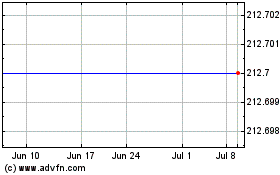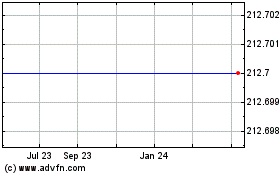Several health insurers posted strong second-quarter results and
raised their full-year outlooks. Most of these gains reflected
higher enrollment figures, organizational changes and fewer
regulatory reform-related losses. Most of them are moving into the
third year of record profits, which continue to benefit from a
lingering recessionary mind-set among members, who are postponing
medical utilization.
Health insurance companies finished strongly in 2010, helped by
reduced medical utilization in a weak labor-market backdrop. This
trend has carried into 2011 and is expected to remain in place over
the coming quarters as well. We believe soft utilization level will
act as a tailwind for the industry.
In 2008, when unemployment increased rapidly, utilization factor
did not see a proportionate drop, indicating its lagging nature.
Thus, even if the employment picture starts improving significantly
in the coming months, which may not turn out to be the case given
July’s paltry though better than expected job gains, we may not see
any acceleration in utilization activity until much later.
Results for the first half of 2011 also reflect that the impact of
minimum medical loss ratio (MLR) regulation that became effective
at the outset of the year has remained muted. The overhaul requires
insurers to spend a minimum percentage of their premiums (80% for
individual and small group policies, while 85% for large commercial
ones) on medical claims and quality improvements or issue rebates
to consumers.
The goal behind the law is to ensure that a fair share of the
premiums an insurer collects goes toward care. Its impact on the
sector has been muted so far due to the moderated health care use,
which helped offset estimated rebates that the companies have to
pay under the MLR requirement.
Makeover Year
2011 is turning out to be a makeover year for carriers in the
health insurance industry as they react to and prepare themselves
for new rules. Continuing cost pressures and new customer demands
require a fresh look at the existing roles of industry players.
Industry revenue will, however, decline from years 2011 through
2014 and 2015. This will likely be far more challenging to the
industry, as insurers will be forced to adjust to the law’s
greatest changes, like providing coverage to everyone regardless of
whether they had an expensive pre-existing condition.
However, as the economy recovers, unemployment will decrease and
discretionary spending will rise. With employment expected to grow,
the demand for employer-sponsored plans will improve. This is
important because the majority of the industry premiums are related
to group health insurance plans. Additionally, the rise in
discretionary spending would support industry growth as
individuals, families and self-employed business owners would be
able to afford healthcare coverage again.
The US population is also aging, which is an important indicator of
demand for health insurance coverage. Older individuals are more
likely to use medical coverage than their younger, healthier
counterparts. Consequently, the aging population is expected to
support industry growth.
Consolidation Ahead
With the recent developments, particularly the Health Care Reform
Act, we expect additional mergers and acquisitions buzz in the
health insurance industry as the smaller players find it difficult
to cope with increased regulations.
We believe the consolidation of larger for-profit MCOs is imminent.
Smaller plans in the industry are struggling with MLR floors and
insufficient member pools are reaching out to larger players. Most
of the smaller plans, facing fixed costs of ICD-10 and reform, are
unable to access capital in advance of the exchanges and thus would
not survive. Consequently, the larger players should stand to
benefit by making tuck-in acquisitions at attractive levels.
Many of the major players, such as
UnitedHealth
Group (UNH) and
WellPoint (WLP), made a
number of acquisitions during the past five years and are expected
to continue with such activities going forward. The industry is
expected to continue to consolidate as insurers try to cut costs
and improve profitability. At the same time, larger firms would
benefit from greater bargaining power in determining healthcare
rates with medical providers such as doctors, hospitals and
pharmacies.
OPPORTUNITIES
Though mostly all the carriers are performing well in the sector,
we are positive about
CIGNA Corp.(CI),
UnitedHealth Group Inc. (UNH) and
Aetna
Inc. (AET).
CIGNA, carrying a Zacks #2 Rank, is relatively safe, owing to
minimum exposure to MLR regulations, unreasonable rate reviews and
health insurance exchanges. The company has also seen its bottom
line boosted by price increases and exits from non-strategic
markets such as the Medicare Advantage individual
private-fee-for-service business. The company has also shown
operating momentum and has gained commercial risk memberships for
four quarters in a row.
We also see a positive risk/reward scenario for UnitedHealth Group,
which carryies a Zacks #2 Rank. The country's largest managed-care
company by revenue has been realigning its businesses by making
management changes and undertaking rebranding efforts, in
anticipation of a shifting industry landscape. Its diversified
product offering will allow it to adapt to the health care
regulations.
Driven by an improved customer focus, with better systems,
completed acquisition network integrations and more regional
management, UnitedHealth's performance should continue to improve.
Its strong balance sheet will allow it to annex weaker firms that
cannot adapt to the reformed health insurance system properly. The
company has witnessed significant enrollment growth, and its claims
costs continue to be muted by consumers’ light use of health
services.
Aetna Inc., with a Zacks #2 Rank, is another pick. The health
insurer has been making acquisitions and diversifying as well as
strengthening its presence in health information technology,
accountable-care organizations or ACOs, and Medicare plans. It has
stepped up efforts to provide midsize companies with a self-funded
insurance option.
Aetna has been benefiting from higher rates and less membership
declines. It also has been more assertive on hospital pricing and
reimbursements. In May, the federal regulators lifted sanctions
that had blocked Aetna from marketing Medicare plans and signing up
new beneficiaries. The ban has been lifted just before the onset of
the new enrollment season beginning July 1, 2011.
Medicare continues to be a key focus of growth for the company.
However, the growth is likely to be slow as regaining of 44000
Medicare Advantage lives, which the company lost following the
sanction, would be difficult.
WEAKNESSES
Healthcare investors for the near future will likely require more
trading, in our opinion, and less buy and hold. As PPACA gets
converted to regulation, more issues driving uncertainty will
likely arise, necessitating portfolio repositioning. Though the
companies will likely suffer share price volatility in the near
future, at least until the Health Care Reform Act falls in place,
all the businesses are expected to perform well in the long
term.
With good fundamentals and an expected boost from the Reform Act
later, none of the companies have any significant weaknesses. Thus,
there is no company in the health insurance industry under our
coverage carrying a Zacks #4 Rank (Sell) or even a Zacks #5 Rank
(Strong Sell). We believe investors should more routinely evaluate
the regulatory environment, alter opinion, and position
accordingly.
AETNA INC-NEW (AET): Free Stock Analysis Report
CIGNA CORP (CI): Free Stock Analysis Report
UNITEDHEALTH GP (UNH): Free Stock Analysis Report
WELLPOINT INC (WLP): Free Stock Analysis Report
Zacks Investment Research
Aetna (NYSE:AET)
Historical Stock Chart
From Apr 2024 to May 2024

Aetna (NYSE:AET)
Historical Stock Chart
From May 2023 to May 2024
